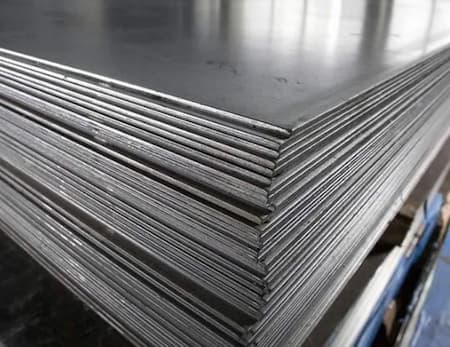Steel
Steel is the first and most important iron alloy used for construction and engineering applications in the world. This product is widely used in all industries, including cars, construction products, and cargo ships, to refrigerators, washing machines, and surgical knives. This type of steel section can be recycled and used many times without losing its properties.
Relatively low production costs, abundance of raw materials (iron ore and scrap iron) and a unique range of mechanical properties are the main reasons for the popularity of steel types in various industries and applications. Types of this alloy are classified based on different criteria such as chemical composition, application, production process, melting method, appearance, strength, crystal structure, oxygen separation process and heat treatment.
The difference between steel and iron
Steel is an alloy of iron whose carbon percentage is between 0.002 and 2.1% and its properties can be adjusted by changing the composition of carbon, alloying elements and heat treatment. This material is widely used in various industries due to its high strength and reasonable price. Modern steelmaking methods, such as BOf, have led to lower costs and increased steel purity. Increasing carbon increases strength, but reduces weldability. In multiphase steels, the combination of strength and ductility is improved by stabilizing the austenite phase.
The main difference between iron and steel is in the amount of carbon, which is usually estimated between 0.03 and 1.075% in steel. Steel retains the characteristics of iron in the best possible way. However, adding carbon and other metallic and non-metallic elements to the structure of iron improves these physical and chemical properties, especially compressive and tensile strength.
Despite the increase in malleability and greater compressive and tensile strength, the above steel and iron sections also have anti-corrosion properties, while iron oxidizes when exposed to oxygen and water. Of course, as much as the strength of this alloy is higher than iron, its malleability is lower and it is harder. Also, the addition of elements of silicon, manganese and chromium gives steel an extraordinary tensile strength.
Features of steel
Very high resistance is considered the most important property of steel, which has made it the most effective industrial material; In general, this alloy has high resistance to stretching, wear and corrosion. Of course, corrosion resistance is related to stainless steel grades. In addition, steels have good durability and stability under different loading conditions.
In addition, due to the abundance and availability of its manufacturing resources, as well as its reasonable cost, steel has become a widely used and practical alloy.
Base metal: iron
Iron is known as one of the abundant elements in the earth’s crust and is the base metal of many products. Steels are one of these products, 50% of which are composed of iron. Accordingly, iron is mentioned as the main element in the production of this alloy.
It should be noted that if the amount of iron in the alloy is less than 50%, it is no longer called steel. Additionally, if an alloy of iron and carbon contains too much carbon, it is not steel and is classified as cast iron.
Carbon effects
Carbon is considered the most important element in the production of this alloy; Because it has the greatest impact on its structure. In general, this product has a maximum of 2% carbon and any change in its amount affects all its properties such as tensile strength, yield point, brittleness, weldability, etc. As the amount of carbon increases, the strength and hardness of the steel increases and its welding, machining and malleability decreases. In this way, if the strength and hardness of steel is important to you, you should increase its carbon percentage.
Effects of heat treatment
Heat treatment is one of the important processes in the steel industry, which is carried out for different purposes. This operation is called a set of processes that are associated with heating and cooling parts. Heat treatment changes the metallurgical properties of parts; The purpose of doing this is to prepare parts for various applications. In other words, the physical, chemical and metallurgical properties of steel change during the thermal process and finally reach the desired equilibrium level.
Alloying effects
Alloying in this product creates different properties and characteristics in it; In such a way that by changing the percentage of each of these alloy elements in the chemical structure, its properties undergo many changes. Among the alloy elements that can be added to the composition of steel, we can mention copper, molybdenum, manganese, chromium, nickel, etc.
Purchase and price of steel in Isfahan
There are important points to pay attention to in order to buy all kinds of iron tools, such as knowing the type, quality and price of the desired product. Therefore, we offer you Foulad Braba Industrial Group.
Baraba Steel Industrial Group, with more than 50 years of experience, is one of the best producers and suppliers of all kinds of iron and its products, such as all kinds of colored sheets, all kinds of galvanized sheets, etc., in Isfahan, and you, dear ones, can contact us to buy and get advice.
Address:
Mahmoud Abad Industrial Town- 26th West Street- Baraba Stone Machinery
Contact number:


Comments are closed